 |
| February 24, 2015 | Volume 11 Issue 08 |
Designfax weekly eMagazine
Archives
Partners
Manufacturing Center
Product Spotlight
Modern Applications News
Metalworking Ideas For
Today's Job Shops
Tooling and Production
Strategies for large
metalworking plants
Cutting-edge machining: Shooting laser beams inside a water jet
By GE Reports
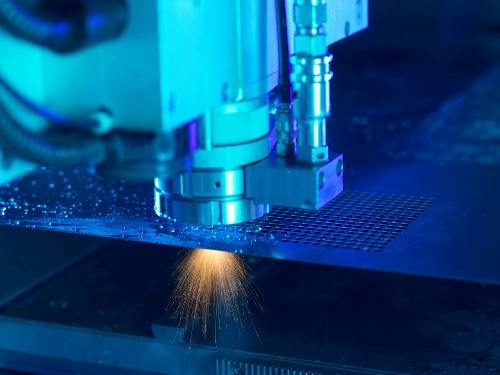
Laser MicroJet, developed by GE and Synova, combines the advantages of water and laser cutting into one operation. [Image credit GE Power & Water]
Leonardo da Vinci always seemed to be hungry for new ideas, but sometimes he may have been just hungry. Some 500 years ago, he designed a roasting jack that powered an automatic rotisserie. It used hot air rising from a fireplace to spin a horizontal vane placed in the chimney above it. The vane was attached to a vertical rod that turned the spit, and, presumably, his dinner.
The jack was one of the world's first turbines, and engineers have been using the same principle inside jet engines and power plants ever since. Since high heat can make turbines more efficient, the hot sections of modern turbines operate at temperatures above 2,500 deg F, much higher than Leonardo's design and near the melting point of steel.
For that reason, their blades, which are shaped like aircraft wings and machined to extreme accuracy, require very sophisticated ways of cooling. Engineers riddle the blades with a maze of tiny channels and holes that bleed in enough cooling air to protect them. But making the holes in the right places without weakening the blades, which spin thousands of times per minute and must handle titanic pressures, is akin to magic.
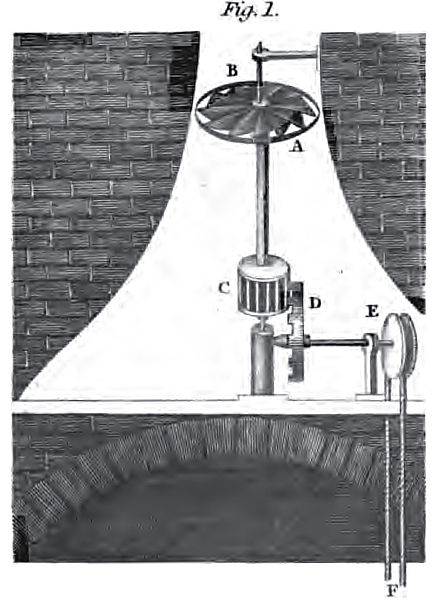
A 19th century design of a smoke jack. [Image credit: Gregory Olinthus]
Traditionally, companies have used lasers to make the tiny holes, heating the surface with the beam until the steel vaporizes. But that's a delicate business. The metal can sputter and form molten microscopic gobbets that can spread through the air and stick to the finely machined metal surface.
Charlie Hu, an industrial manufacturing engineer at GE Power & Water, is exploring a different way. He is drilling cooling holes with a technology called Laser MicroJet developed by the Swiss company Synova.
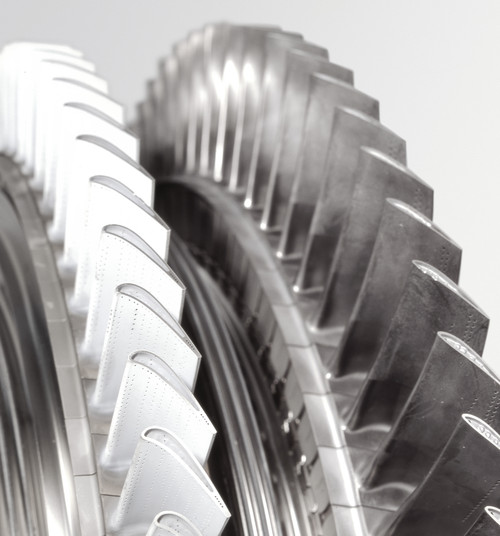
Cooling holes in high-pressure turbine blades for the CF-6 jet engine. These engines power many Boeing 747 passenger jets. [Image credit: GE Aviation]
The Laser MicroJet fires a laser beam inside a hair-thin jet of water, which acts like an optical fiber and guides the laser to the blade surface. The conventional focused laser beam has a limited working distance of just a few millimeters due to beam divergence. Laser MicroJet technology employs a laser beam that is completely reflected at the air-water interface, where the beam can be guided over a distance up to 10 cm.
The jet also helps cool down the surrounding material and flushes out machining debris. The technology could allow engineers to make more durable parts faster and design turbines that perform better. According to Synova, "the advantages outweigh both high-pressure water-jet cutting and conventional laser cutting."
Starting in 2011, it took Dr. Hu three years to adapt the method to turbines and take it out of the lab at GE Power & Water in Greenville, SC. "We had to redesign the laser jet to the geometries we required," says James Cuny, engineering executive at GE Power & Water. "Before this, the machine used for other applications was like a big barrel with a laser coming out of it. It was not very conducive to what we required."
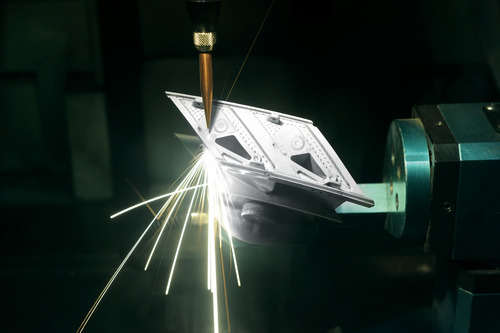
Today, manufacturers use lasers to make cooling holes in turbine blades. [Image credit: GE Aviation]
GE has already used the technology to make gas turbine blades. The company is now looking at applying it to other related businesses, such as aviation. "There is a lot of great development so far on this," Cuny says. "Our engineers are excited about pushing the limits of the technology and bringing it to the market in the very near future."
Dr. Hu's mind is already on the next idea. Since the water jet can be also used to slice materials, GE and Synova are investing in a new technology that combines the advantages of both water and laser cutting in a single operation.
Leonardo invented his turbine while thinking about grilling. Hu's ideas give GE a new cutting edge.
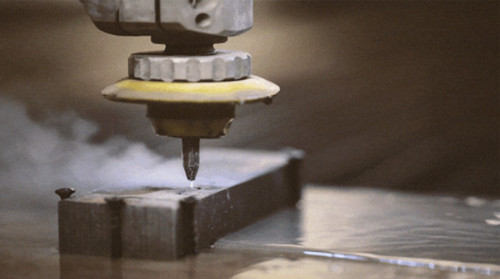
Engineers at GE Global Research are developing an ultra-efficient water-jet cutter that can blast through slabs of metal with ease. Here, the water jet is being tested to cut wind turbine parts from a solid aluminum ingot. It fires an abrasive mixture of garnet dust and plain water at a pressure of 60,000 lb/in.2. The water-jet cutter could dramatically reduce manufacturing time at GE plants. [Image credit: GE Global Research]
Read more GE reports at www.gereports.com.
Published February 2015
Rate this article
View our terms of use and privacy policy
